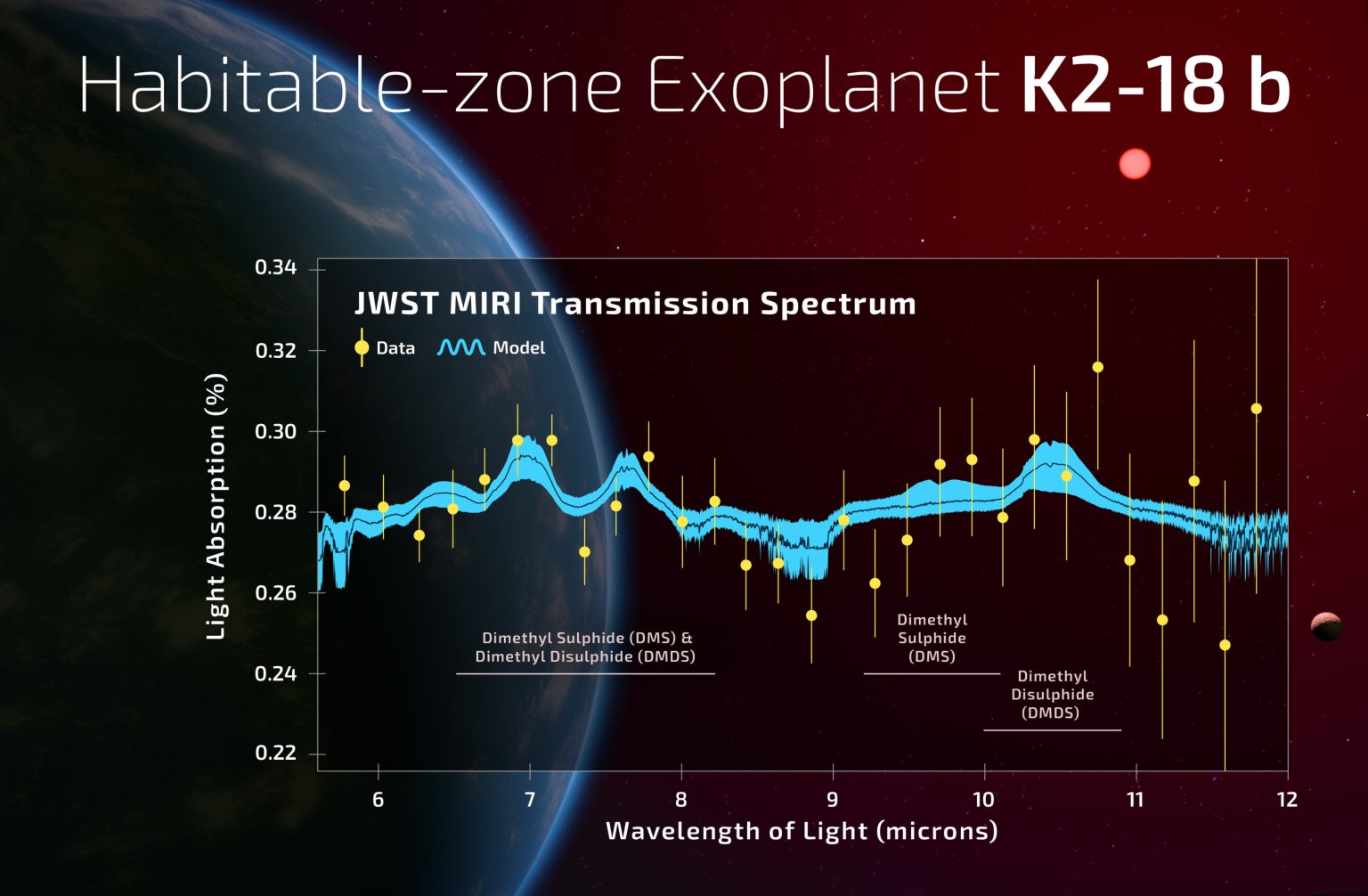Scientists confirm that dimethyl sulfide and dimethyl disulfide are present on planet K2-18b. On Earth, biological processes are the source of these substances. However, the world where they have been discovered is very likely not a very earth-like world.

Planet K2-18b
Astronomers who work with the James Webb Space Telescope have reported sensational news. Dimethyl sulfide and dimethyl disulfide have been found on planet K2-18b. On Earth, these two substances are only produced by living organisms, so they are considered reliable markers of the presence of organic beings. Researchers say this is the best evidence to date of the presence of life beyond Earth.
In fact, dimethyl sulfide and dimethyl disulfide on K2-18b were discovered two years ago. However, evidence of their presence was highly unreliable at the time. Therefore, scientists have resorted to a long observation of this celestial body using the James Webb Space Telescope.
It made a spectroscopic study of light that comes to a planet from its star and passes through the atmosphere. The reliability of the presence of two substances that have not yet been observed anywhere but Earth is 3 sigma. This is a very good indicator, virtually eliminating the possibility of error. However, it will be completely verifiable when 5 sigma accuracy is achieved. According to scientists, this can be achieved by continuing to observe the planet.
What planet is this?
At the same time, if you look at K2-18b more closely, the sensationalism of the news can be questioned. The planet was discovered back in 2015. It is located at a distance of 124 light years in the constellation Leo. One orbit around its star takes only 33 days, but the luminary is much dimmer than the Sun.
Thus, the planet is in the so-called “zone of life”, that is, under conditions similar to Earth’s atmospheric pressure, water on it should be in a liquid state. And this substance is actually present there. It was identified years ago.
But what state of water is actually on K2-18b is a very debatable question. The fact is that the mass of the planet is 8.7 times that of Earth, and the radius is 2.6 times that of our planet. And scientists just don’t know what such a world should be, because there’s nothing like it in the solar system.
The range of assumptions as to what conditions exist at K2-18b is very different. At one end of it is a planet similar to Earth, only covered by an ocean. On the other is something like Neptune with its high-temperature ice, which exists under conditions of raging pressure. And somewhere in between lies the real state of affairs.
All indications are that there should be a significant greenhouse effect on the planet. So, it is quite possible that the ocean that exists in some of its layers will turn out to be too hot for life. And it’s not so simple with the two sulfur-containing substances that caused the sensation either.
It is on Earth that dimethyl sulfide and dimethyl disulfide are produced exclusively by living organisms. Just because scientists don’t know the natural ways to synthesize them without animal and plant involvement doesn’t mean they don’t exist. Indirect proof of this is the fact that “markers of life” in the atmosphere of such an inhospitable planet as K2-18b are 1000 times more than on Earth.
According to phys.org


